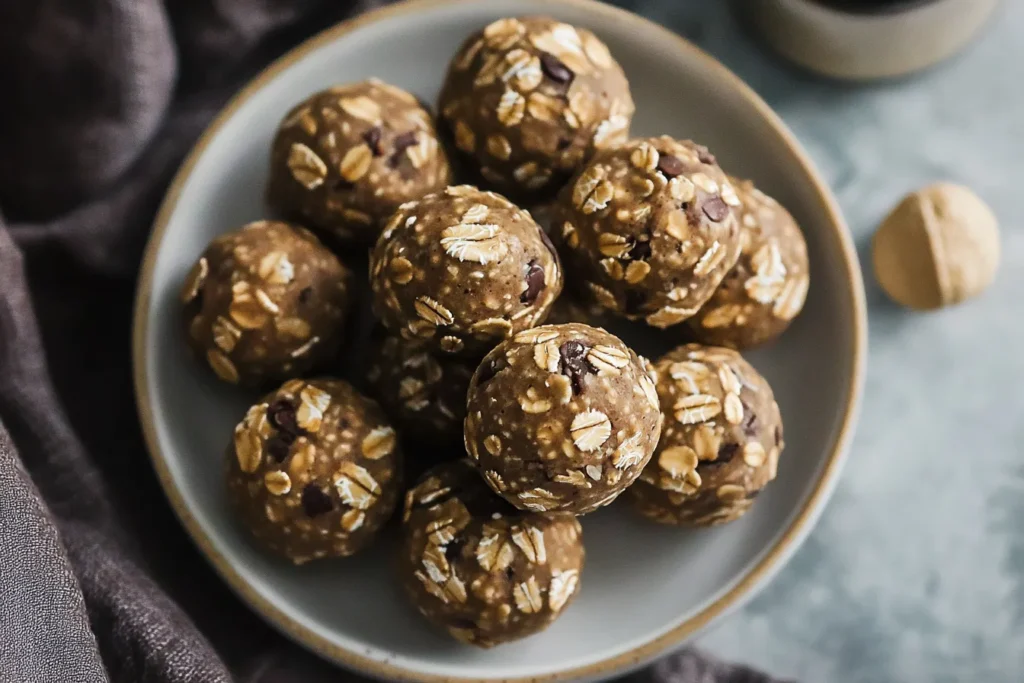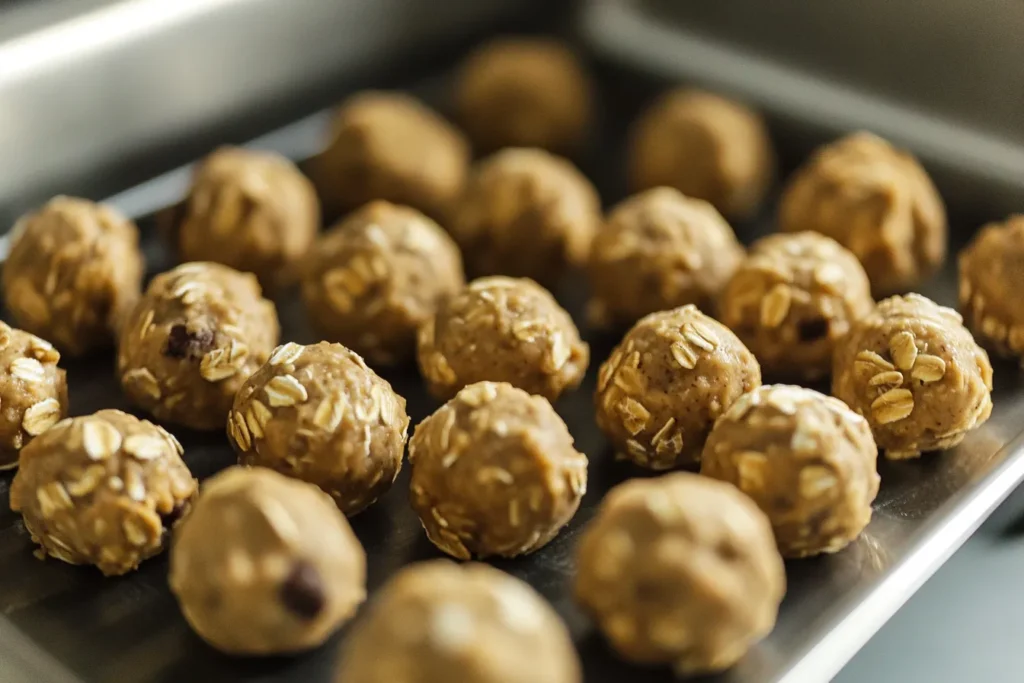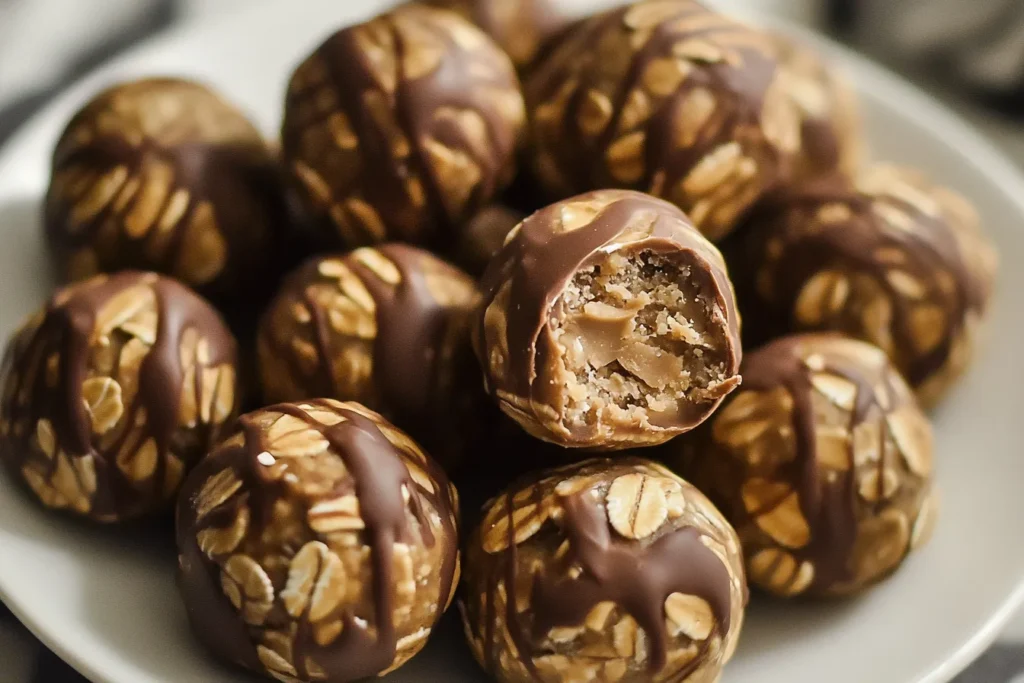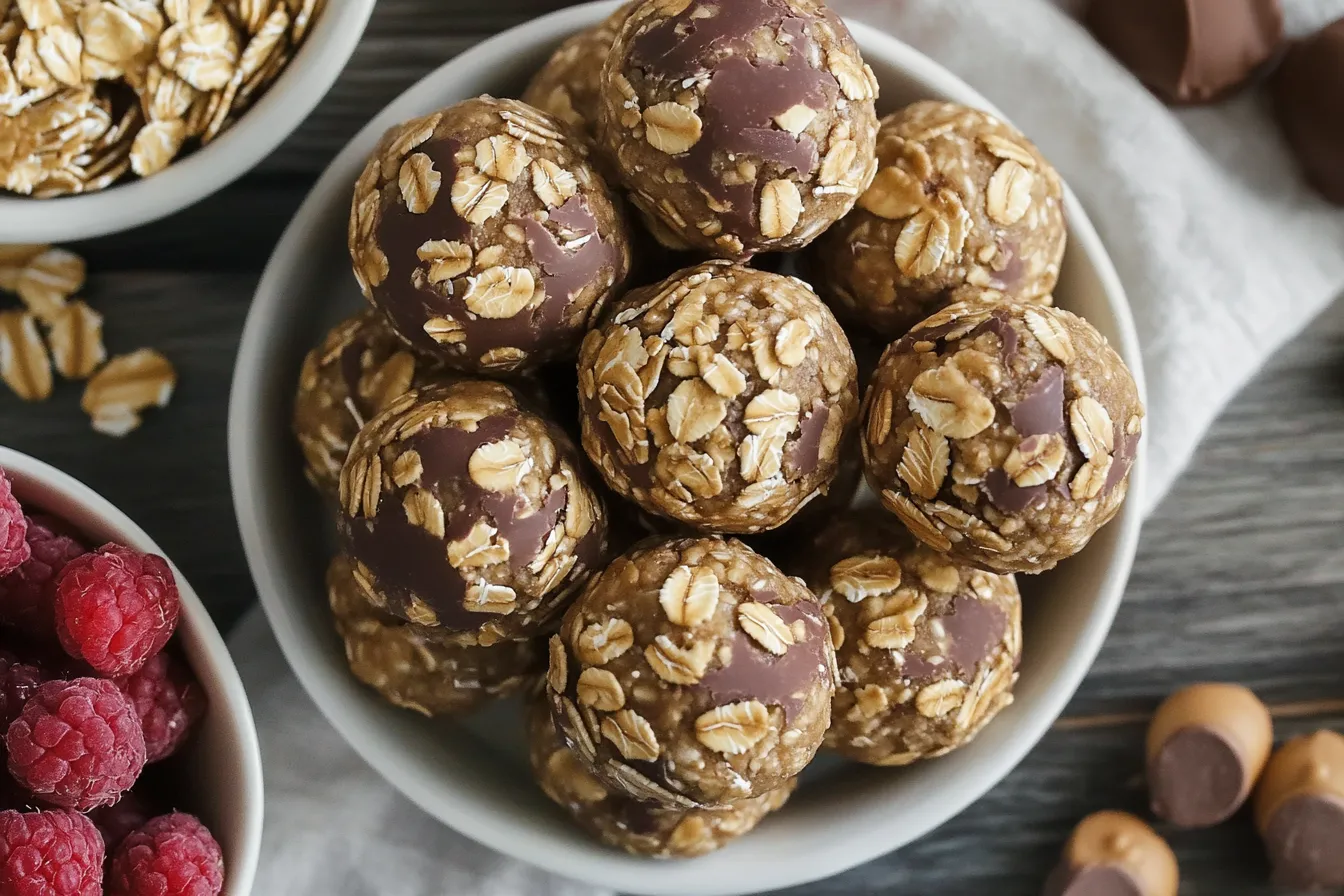Is oatmeal with peanut butter healthy? Absolutely! This delicious combination is packed with fiber, protein, and healthy fats, making it the perfect way to fuel your day. Not only does it support heart health and boost energy, but it also keeps you feeling full and satisfied for hours.
Nutritional Overview of Oatmeal
Oatmeal has earned its reputation as a superfood for good reason. It’s a versatile breakfast staple that provides a host of nutrients essential for maintaining overall health.
Key Nutrients Found in Oatmeal
Oatmeal is a nutritional goldmine, offering a variety of vitamins, minerals, and macronutrients. Key components include:
- Fiber: High in soluble fiber (beta-glucan), oatmeal promotes heart health by reducing LDL cholesterol levels.
- Protein: While not as protein-rich as peanut butter, oats contain approximately 5 grams per serving.
- Micronutrients: Loaded with iron, magnesium, zinc, and B vitamins essential for energy production and immune function.
- Antioxidants: Avenanthramides, unique to oats, help reduce inflammation and improve blood flow.
Types of Oatmeal: Steel-Cut, Rolled, and Instant
Choosing the right type of oatmeal is crucial for maximizing nutritional benefits:
- Steel-Cut Oats: Least processed, providing the highest fiber content and a chewy texture.
- Rolled Oats: Flattened and slightly processed, these cook faster but still retain most nutrients.
- Instant Oats: Pre-cooked and highly processed, these are convenient but often contain added sugars and fewer nutrients.
Peanut Butter: A Nutritional Powerhouse
Peanut butter complements oatmeal perfectly, both in flavor and nutrition. This creamy or crunchy spread is an excellent source of essential nutrients and energy.

Healthy Fats and Proteins in Peanut Butter
Peanut butter is revered for its balanced macronutrient profile, which includes:
- Healthy Fats: Rich in monounsaturated and polyunsaturated fats that support heart health.
- Protein: Contains approximately 8 grams of protein per two-tablespoon serving, aiding in muscle repair and satiety.
- Vitamins and Minerals: Packed with vitamin E, magnesium, potassium, and niacin.
Choosing the Right Peanut Butter: Natural vs. Processed
Selecting the right type of peanut butter is vital to reap its full benefits. Here’s how to differentiate:
- Natural Peanut Butter: Made with minimal ingredients, often just peanuts and salt, and contains no added sugars or hydrogenated oils.
- Processed Peanut Butter: May contain added sugars, oils, and preservatives, reducing its overall nutritional value.
- Tip: Look for options labeled “natural” or “organic” with minimal ingredients for a healthier choice.
Combining Oatmeal and Peanut Butter for a Balanced Meal
Pairing oatmeal and peanut butter creates a synergistic effect, combining their individual health benefits into one nutritious meal.
Synergistic Nutritional Benefits
Together, oatmeal and peanut butter provide a balanced mix of macronutrients and micronutrients:
- Carbohydrates: Oatmeal delivers complex carbohydrates for sustained energy.
- Proteins and Fats: Peanut butter adds high-quality proteins and fats for longer-lasting fullness and muscle repair.
- Micronutrients: The combination boosts the intake of key vitamins, minerals, and antioxidants.
A Look at Fiber, Protein, and Energy Release
This meal is ideal for those seeking to maintain energy levels throughout the day:
- Fiber :supports optimal digestion and plays a key role in stabilizing blood sugar levels.
- Protein: Enhances muscle recovery and promotes satiety.
- Energy Release: The combination ensures a slow release of energy, preventing energy crashes commonly associated with sugary breakfasts.
The Health Advantages of Eating Oatmeal with Peanut Butter
Combining oatmeal with peanut butter is more than just a delicious breakfast—it’s a recipe for numerous health benefits. From supporting heart health to aiding weight management, this meal is a powerhouse of nutrients that fuel the body while keeping you full and satisfied. Let’s dive deeper into how this dynamic duo can positively impact your overall well-being. Check out more recipes here.
How Oatmeal with Peanut Butter Supports Heart Health
Heart health is a cornerstone of overall wellness, and this meal plays a significant role in protecting your cardiovascular system.

Role of Soluble Fiber in Cholesterol Reduction
Oatmeal is rich in soluble fiber, particularly beta-glucan, which is known for its cholesterol-lowering properties. Here’s how it works:
- Soluble fiber binds with cholesterol in the digestive tract, preventing its absorption into the bloodstream.
- Regular consumption of oatmeal can lower LDL (bad cholesterol) levels while maintaining or even increasing HDL (good cholesterol).
This fiber’s impact is amplified when combined with peanut butter, as the monounsaturated fats in peanuts also support healthy cholesterol levels. Check out more recipes here.
Contribution of Healthy Fats to Cardiovascular Wellness
Peanut butter’s healthy fats, especially monounsaturated and polyunsaturated fats, contribute to heart health by:
- Reducing the risk of atherosclerosis (plaque buildup in arteries).
- Supporting normal blood pressure levels.
- Improving the body’s response to insulin, reducing the risk of diabetes—a condition closely linked to heart health.
The combination of oatmeal and peanut butter offers a dual-action effect, targeting cholesterol and promoting overall cardiovascular health.
Benefits for Weight Management
Oatmeal with peanut butter is an excellent choice for those looking to manage their weight without compromising on taste or nutrition. Check out more recipes here.
High Satiety from Oatmeal and Peanut Butter
This meal is a perfect example of how to eat for fullness and satisfaction. Here’s why it works:
- Oatmeal: Its high fiber content slows digestion, keeping you full for hours.
- Peanut Butter: The protein and fat content provides long-lasting energy, reducing the temptation to snack between meals.
Studies have shown that breakfasts rich in fiber and protein lead to reduced calorie consumption throughout the day, making this combination ideal for weight management.
Portion Control and Caloric Considerations
While this meal is nutrient-dense, it’s important to be mindful of portion sizes to avoid consuming excess calories:
- Stick to a serving size of about half a cup of oats (dry) and two tablespoons of peanut butter.
- For added volume and nutrition, consider incorporating low-calorie toppings like fresh fruits or chia seeds.
This balance ensures you get the full benefits of this meal without overindulging.
A Perfect Pre-Workout or Post-Workout Meal
Athletes and fitness enthusiasts can benefit greatly from incorporating oatmeal with peanut butter into their routines. It’s a versatile meal that supports both energy needs and recovery.
Sustained Energy from Complex Carbs and Protein
Before a workout, your body needs fuel that provides sustained energy:
- Oatmeal’s complex carbohydrates are digested slowly, offering a steady release of energy.
- The addition of peanut butter provides a protein boost, helping to maintain muscle function and prevent fatigue during exercise.
This makes the meal a perfect choice for morning or mid-day workouts.
Recovery Benefits from Essential Amino Acids
Post-workout nutrition is all about muscle repair and replenishing glycogen stores:
- Peanut butter contains essential amino acids that aid in muscle recovery.
- The combination of protein and carbs from oatmeal helps to rebuild energy stores efficiently.
Adding a small amount of honey or banana can further enhance the post-workout benefits, providing a quick source of natural sugars for recovery.
Potential Downsides and Considerations
While oatmeal and peanut butter are a nutrient-dense combination, certain considerations can impact their health benefits. Understanding potential pitfalls and how to overcome them ensures you can maximize the nutritional value of this meal without compromising your dietary goals. Check out more recipes here.
Added Sugars in Flavored Oatmeal or Peanut Butter
One common issue with store-bought oatmeal and peanut butter is the addition of hidden sugars, which can negate some of the health benefits.

How to Identify Hidden Sugars on Labels
Many commercial oatmeal packets, especially flavored ones, and processed peanut butter brands contain added sugars. To identify them:
- Check the ingredient list for terms like high-fructose corn syrup, cane sugar, or molasses.
- Look at the nutrition label for total sugars and added sugars—choose products with minimal or no added sugar.
- Opt for unsweetened peanut butter and plain oatmeal to maintain better control over your sugar intake.
Healthier Alternatives to Sweetened Versions
To enjoy the natural flavors of oatmeal and peanut butter without added sugars, consider:
- Sweetening naturally with fresh fruits like bananas, berries, or apples.
- Adding a small drizzle of honey or maple syrup if necessary, rather than relying on pre-sweetened products.
- Choosing brands labeled as “natural” or “organic,” which typically contain fewer additives.
Allergies and Sensitivities
Allergies and food sensitivities can make some individuals wary of enjoying oatmeal or peanut butter. Fortunately, there are plenty of alternatives to suit various dietary needs.
Peanut Allergies and Substitutes like Almond or Sunflower Butter
For individuals with peanut allergies, substitute options include:
- Almond Butter: Offers a similar nutrient profile, rich in protein and healthy fats.
- Sunflower Butter: A nut-free alternative with a creamy texture and high vitamin E content.
- Cashew Butter: Slightly sweeter, making it a great pairing for oatmeal.
These substitutes ensure a similar taste and nutritional balance without triggering allergic reactions.
Gluten-Free Oatmeal Options
While oats are naturally gluten-free, they are often processed in facilities that handle wheat, leading to cross-contamination. To ensure gluten-free options:
- Look for brands specifically labeled as “certified gluten-free.”
- Research brands that use dedicated gluten-free facilities to minimize risks for those with celiac disease or gluten sensitivity.
Practical Tips for Making Oatmeal with Peanut Butter
A well-prepared bowl of oatmeal with peanut butter can be both a quick and nutritious meal. By following these practical tips, you can elevate its flavor and nutritional value.
Simple Recipes for a Quick Breakfast
Here’s an easy recipe to kickstart your day:
Ingredients:
- ½ cup rolled oats
- 1 cup milk (or plant-based alternative)
- 2 tablespoons peanut butter
- Optional toppings: sliced banana, chia seeds, or a dash of cinnamon
Instructions:
- Cook oats in milk or water on medium heat until creamy.
- Stir in peanut butter until fully incorporated.
- Top with fruits, seeds, or spices for added flavor and nutrients.
Adding Toppings: Fruits, Nuts, or Seeds for Extra Nutrition
Enhance the nutritional profile of your oatmeal by incorporating these toppings:
- Fruits: Add vitamins, natural sweetness, and fiber (e.g., berries, apples, or mango).
- Nuts and Seeds: Provide extra healthy fats, protein, and texture (e.g., almonds, walnuts, or flaxseeds).
- Spices: Cinnamon or nutmeg can enhance flavor without adding calories.
Comparing Store-Bought vs. Homemade Oatmeal and Peanut Butter Meals
Convenience often drives many to purchase pre-packaged meals, but homemade options offer significant advantages.
Cost-Effectiveness of Preparing at Home
Homemade oatmeal with peanut butter is typically more affordable and customizable. Here’s why:
- Lower cost per serving: Bulk oats and natural peanut butter are budget-friendly.
- Ingredient control: Avoid added sugars, preservatives, or artificial flavors by making it yourself.
Tips for Prepping in Advance
Meal prepping oatmeal can save time while ensuring a nutritious start to your day:
- Overnight oats: Combine oats, milk, and peanut butter in a jar and refrigerate overnight for a grab-and-go option.
- Batch cooking: Prepare a larger batch of oatmeal and store portions in airtight containers for easy reheating throughout the week.
Conclusion
Oatmeal with peanut butter is a simple yet powerful meal that supports heart health, weight management, and energy levels. By being mindful of added sugars, portion sizes, and potential allergens, you can enjoy this nutrient-rich combination to its fullest potential. Whether it’s a quick breakfast or a post-workout meal, the versatility and benefits of oatmeal and peanut butter make it a staple worth incorporating into your daily routine. Check out more recipes here.
FAQs
- Is oatmeal with peanut butter good for diabetics?
Yes, but choose unsweetened peanut butter and plain oatmeal to avoid spikes in blood sugar. - Can I eat oatmeal with peanut butter every day?
Absolutely, as long as portion sizes are controlled and you balance it with other meals. - What’s the best milk to pair with oatmeal and peanut butter?
Any milk works, but almond or oat milk adds creaminess and keeps it plant-based. - How many calories are in a typical serving?
A standard serving with toppings is around 300-400 calories, depending on ingredients. - Is oatmeal with peanut butter good for weight loss?
Yes, its high fiber and protein content promote satiety, helping manage hunger. - Can I add protein powder to oatmeal with peanut butter?
Yes, adding protein powder can enhance its muscle-building properties. - What toppings are best for boosting energy?
Bananas, chia seeds, and honey are excellent for a natural energy boost. - Is steel-cut oatmeal better than rolled oats?
Both are healthy, but steel-cut oats have a lower glycemic index and take longer to digest. - Can children eat oatmeal with peanut butter?
Yes, it’s a nutritious meal for kids, but monitor portion sizes and potential allergies. - How long does oatmeal with peanut butter keep me full?
Typically, 3-4 hours due to its balanced macronutrient profile.
